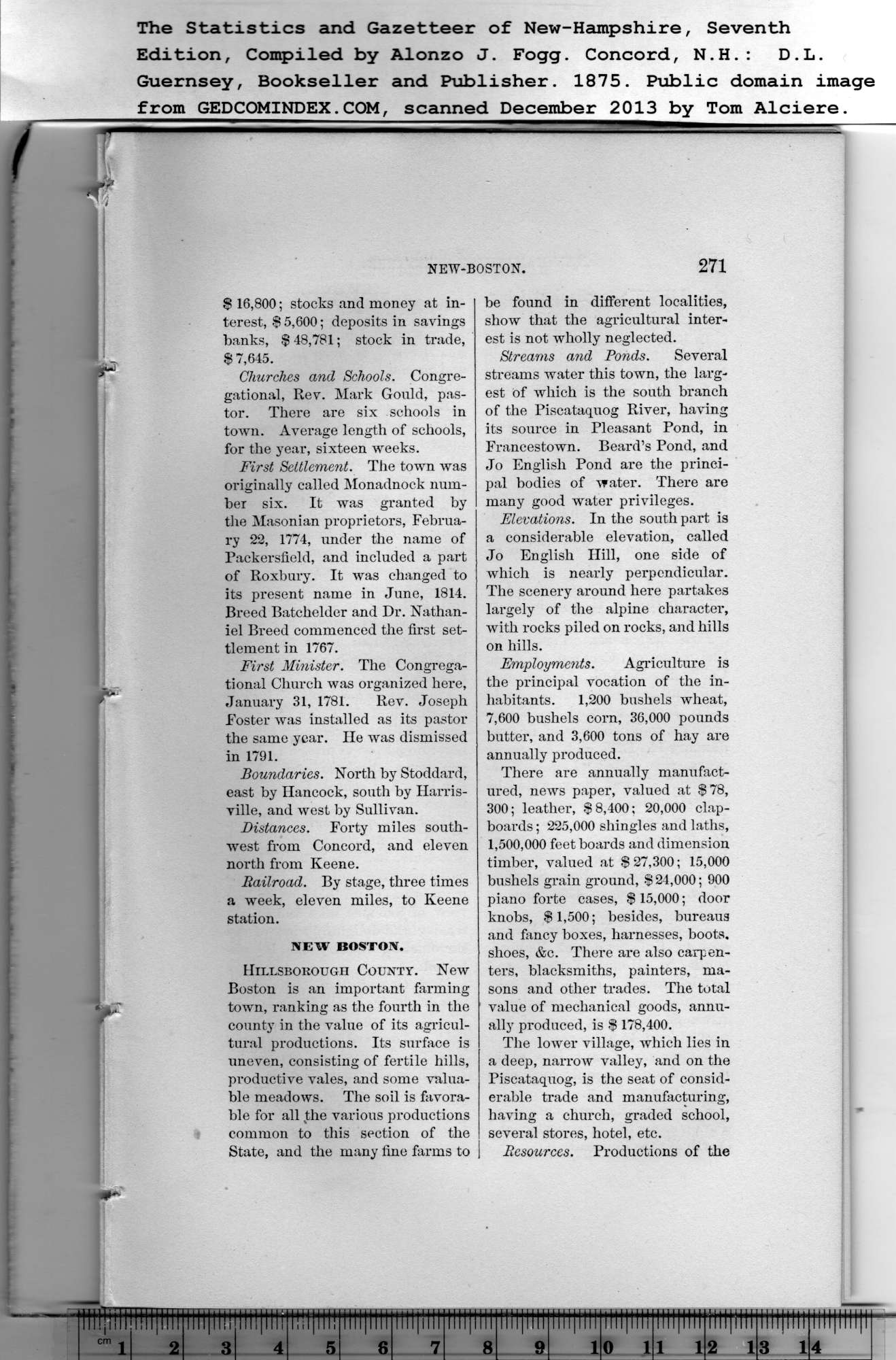|
$ 16,800; stocks and money at in-
terest, $ 5,600; deposits in savings
banks, $ 48,781; stock in trade,
$ 7,645.
Churches mid Schools. Congre-
gational, Rev. Mark Gould, pas-
tor. There are six schools in
town. Average length of schools,
for the year, sixteen weeks.
First Settlement. The town was
originally called Monadnock num-
ber six. It was granted by
the Masonian proprietors, Februa-
ry 22, 1774, under the name of
Packersfield, and included a part
of Roxbury. It was changed to
its present name in June, 1814.
Breed Batehelder and Dr. Nathan-
iel Breed commenced the first set-
tlement in 1767.
First Minister. The Congrega-
tional Church was organized here,
January 31, 1781. Rev. Joseph
Foster was installed as its pastor
the same year. He was dismissed
in 1791.
Boundaries. North by Stoddard,
east by Hancock, south by Harris-
ville, and west by Sullivan.
Distances. Forty miles south-
west from Concord, and eleven
north from Keene.
Railroad. By stage, three times
a week, eleven miles, to Keene
station.
NEW BOSTON.
Hillsborough County. New
Boston is an important farming
town, ranking as the fourth in the
county in the value of its agricul-
tural productions. Its surface is
uneven, consisting of fertile hills,
productive vales, and some valua-
ble meadows. The soil is favora-
ble for all the various productions
common to this section of the
State, and the many fine farms to
be found in different localities,
show that the agricultural inter-
est is not wholly neglected. |
Streams and Ponds. Several
streams water this town, the larg-
est of which is the south branch
of the Piscataquog River, having
its source in Pleasant Pond, in
Francestown. Beard’s Pond, and
Jo English Pond are the princi-
pal bodies of water. There are
many good water privileges.
Elevations. In the south part is
a considerable elevation, called
Jo English Hill, one side of
which is nearly perpendicular.
Tlie scenery around here partakes
largely of the alpine character,
with rocks piled on rocks, and hills
on hills.
Employments. Agriculture is
the principal vocation of the in-
habitants. 1,200 bushels wheat,
7,600 bushels corn, 36,000 pounds
butter, and 3,600 tons of hay are
annually produced.
There are annually manufact-
ured, news paper, valued at $78,
300; leather, $ 8,400; 20,000 clap-
boards ; 225,000 shingles and laths,
1,500,000 feet boards and dimension
timber, valued at $27,300; 15,000
bushels grain ground, $24,000 ; 900
piano forte cases, $ 15,000; door
knobs, $ 1,500; besides, bureaus
and fancy boxes, harnesses, boots,
shoes, &c. There are also carpen-
ters, blacksmiths, painters, ma-
sons and other trades. The total
value of mechanical goods, annu-
ally produced, is $ 178,400.
The lower village, which lies in
a deep, narrow valley, and on the
Piscataquog, is the seat of consid-
erable trade and manufacturing,
having a church, graded school,
several stores, hotel, etc.
Resources. Productions of the |
